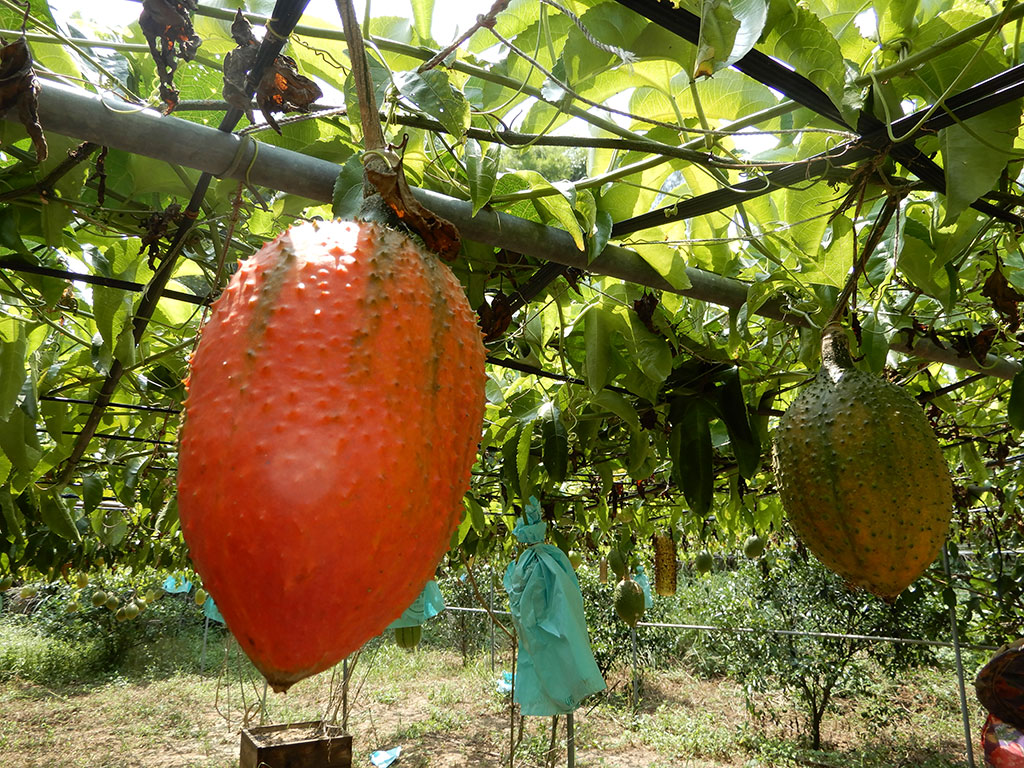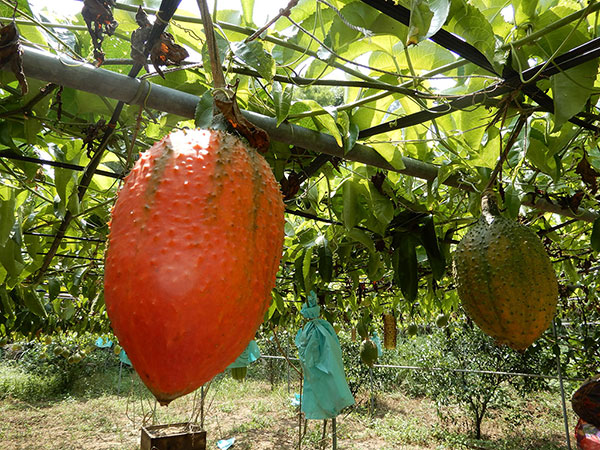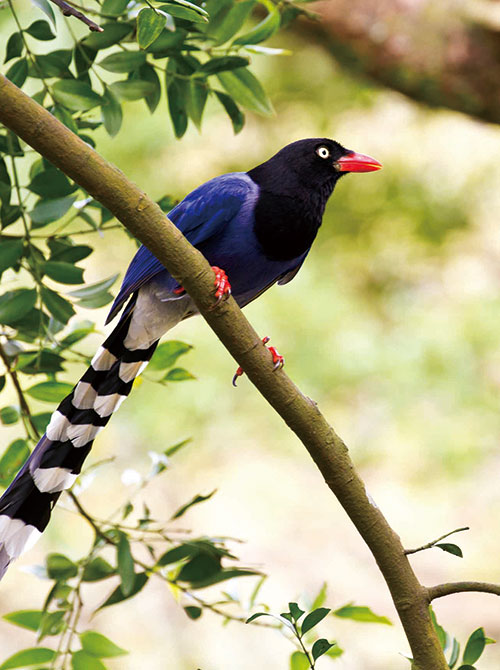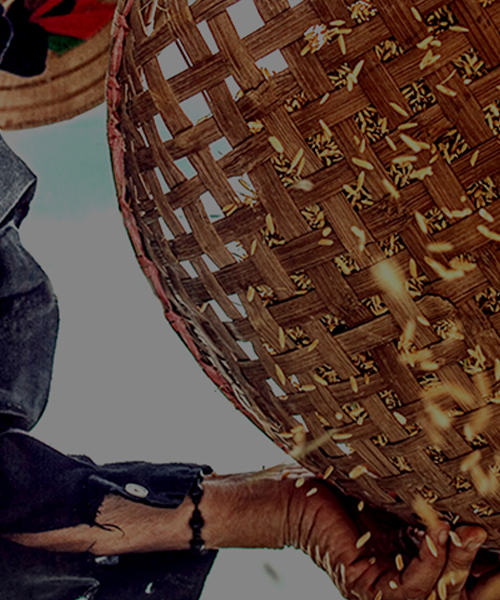Gac fruit, a fruit from heaven
- 2021-09-06
- 2022-12-15
- / 4819 Views
- /

Gac fruit is round or ovate shaped and is full of spines, like pufferfish. Its reddish orange flesh covers red seed membrane (seed pulp or aril). Gac fruit impresses people by its unique shape and becomes popular in America, Europe and Japan recently. According to United States Department of Agriculture, Gac fruit is rich in lycopene, some 70-80 times higher than lycopene in tomatoes, and contains various essential nutrients. Being regarded as “Fruit from heaven”, Gac fruit is studied to develop functional food in Australia, Vietnam, Thailand and more.

Indigenous people’s traditional vegetable and delicacy
Gac fruit (Momordica cochinchinensis Spreng.) is a perennial plant and belongs to the melon family of Cucurbitaceae (genus Momordica.). It is called “Spiny Bitter-Cucumber (刺苦瓜)”, “Couple Fruit (夫妻果)”, or “Yin and Yang Fruit (陰陽果)” by local people. Its flat, round seeds feels like wood and looks like tortoises so people call them “Wood tortoise Fruit (木鱉果)”. Gac Fruit is found easily in India, Southern China and Northeastern Australia and is also indigenous to Hualien and Taitung in Taiwan. It is called “Sukuy” by indigenous “Amis” tribe and “Hamunly” by “Puyuma” tribe respectively. Gac fruit is essential to make “Amis” traditional dishes while Vietnamese add Gac fruit in their sticky rice special for festivals and wedding. Gac fruit is also an important nutritional supplement for Vietnamese women after their pregnancy.
Labor intensive hand pollination and systemic pest control
In 2007, the crop cultivation of Gac fruit was started by farmers in Taiwan, where varieties from Vietnam become more and more popular recently. Taitung District Agricultural Research and Extension Station developed “Taitung No. 1” from our indigenous variety. These varieties are planted in different areas in Taiwan for different soil and weather. Gac fruit is a perennial vine that prefers warm and sunny weather and requires well-drained soil. Organic farmers usually grow Gac fruit with other vine crops, such as passion fruit and sponge guard. Gac fruit blooms in the period from June to August and is usually hand pollinated. To improve fruit fly control, organic farmers use pheromone attractants flies and cover fruits with netting bags. For the better ventilation in the orchards and even sunlight on fruits, leaves and branches shall be carefully pruned. All these measures help Gac fruit to grow healthily.

The whole plant is usable and valuable, including roots, leaves, fruits and seeds.
It usually takes 2 to 3 months for Gac fruit to pollinate and ripen. When the skin turns red from green and yellow, the fruit is ready for harvest and wights 500 to 600 grams. The whole plant, including peel, flesh and red seed membrane, is edible. Fresh leaves can be a good source of vegetable in the summer.
Nowadays more and more biotechnology products have been developed, such as Gac oil capsules and supplements. Careful intake of such products is recommended to prevent overdose.




